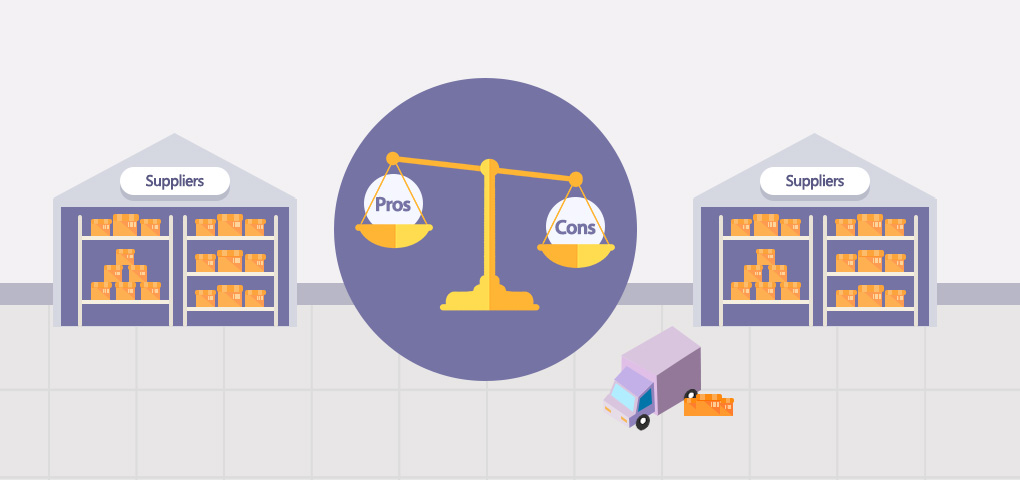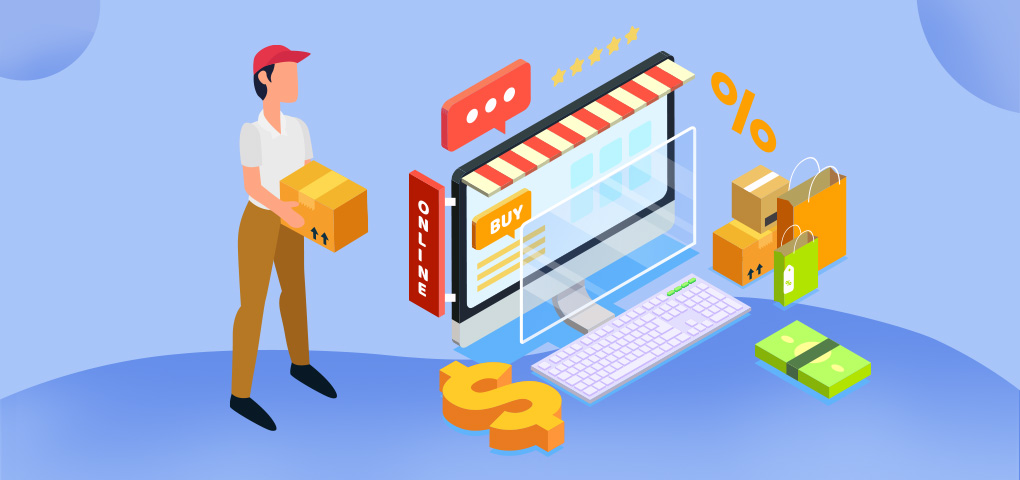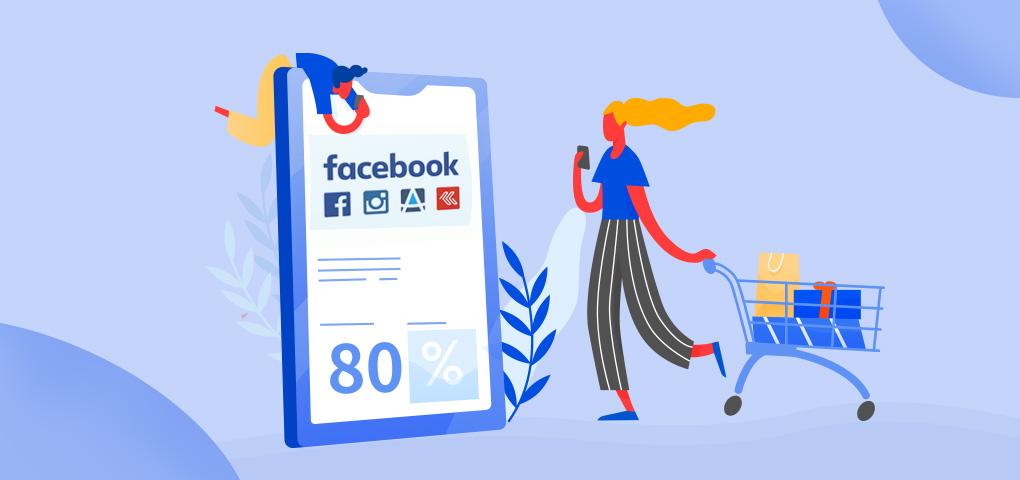While it seems okay to deal with a single supplier when you've just set up your dropshipping business, dropshipping from multiple sources becomes indispensable as you plan on growing your business.
It particularly pays off when you're selling multiple products and a lot of them become your customers' favorite. In times when those products run out of stock with one supplier, you can always sell them from another supplier.
And this is how you grow your business where your customers don't have to see "out of stock" signs for their favorite products.
That's just the tip of the iceberg. We'll get back to more benefits and also explore some caveats, but first, let's see what dropshipping multiple suppliers actually mean?
Dropshipping with Multiple Suppliers: What Do Dropshipping Suppliers Mean?
Dropshipping suppliers are the key stakeholders in your business. They either own the products you sell on your website or store those products. No matter what they do, you cannot turn a blind eye toward them.
Managing inventory with one supplier has some challenges, but doing that with multiple suppliers means you need to focus 3 times on your inventory to stay synced with your suppliers and their products.
Other than that, here's what dropshipping from multiple suppliers further means for you.
1. Business Partnership
Like we said above, the suppliers are key stakeholders in your business. They have the products; you market and sell them. Therefore, having a viable business relationship with them is crucial to the survival of your business. Before taking them on board, make sure you tell them exactly what you expect from them and which products you need all year round.
2. Product Diversity
With a single supplier, you don't have the freedom of selling varieties of a product. Therefore, your chances of increasing your customer base reduce greatly. With multiple suppliers, you get your hands on different varieties of a single product. Not only that, owing to the difference in qualities and their subsequent prices, but you can also target a wide range of customers.
3. Product Price
Yes, you do not own the products you sell, but you do have to keep in mind their prices unless you're selling high-end luxurious watches. All the suppliers you dropship with will indefinitely be in price competition with one another. You can reap benefits from this price competition by including all of them under a single listing.
4. Product Quality
As much as the price of products varies among different suppliers, so does their quality. This variance gives you the freedom to mold your dropshipping business as you like.
If your customers are high-end, you can always cherry-pick good quality products from one of the suppliers. Or, if you are looking to sell to a wider audience, you can include a single product from different suppliers and inform the customers about their quality in their descriptions. Of course, their price tags will also come accordingly.
5. Item Availability
You cannot run your dropshipping business with pure luck. You need products and their constant stream. Item availability is the foremost benefit you reap from dealing with more than one supplier.
6. Order Fulfillment
Using more than one supplier, and that too, with multiple overlapping products make order fulfillment quite easy. The end customer obviously doesn't care about which supplier you choose. They only want their order processed and delivered fast.
Dropshipping with Multiple Suppliers: Pros and Cons
You read some of the benefits of multiple sourcing. Here are some more with a different angle and some caveats as we promised.
Advantages of Multiple Suppliers:
- You can always get alternate sources to deliver your products in case a supplier stops the delivery of a product.
- You can always meet peak demand and not run into bottlenecks because of insufficient stock.
- When you order from more than one supplier, you instill a fierce competition among them, and in turn, get better quality and price, delivery, and product innovation.
- Your business gets a sense of security as you are able to respond to unheard events in the future that could either compromise the supplier's production capacity or its inventory management.
- You get an upper hand when negotiating different business deals as you let them know that you don't work exclusively with them.
Disadvantages of Multiple Suppliers:
- Suppliers reduce their efforts in meeting your order requirements because they cultivate a sense of focusing on those dropshippers who only order with them.
- You might face higher costs for processing smaller orders. Alternatively, if the demand rises, added phone calls, records, and other bookkeeping charges also mount up.
- Lesser bargaining because you're working with more than one supplier.
- Managing multiple suppliers is energy and effort draining.
So, these were the pros and cons of multiple suppliers. You can always mitigate the cons by managing multiple sources in a better way.
Here's how to do that.
How to Manage Multiple Dropshipping Suppliers?
1. Cherry-Pick Dropshipping Suppliers
Picking dropshipping sources is like choosing a bridal dress. You cannot just go for any dress. You choose what appeals to you. In terms of your business, you should choose reputed suppliers with a proven track record. There are many fake suppliers online. So, beware.
2. Ensure SKU Uniqueness
If you don't keep SKUs or stock-keeping units of your suppliers unique, you'd end up in confusion. That's what you don't want and also all of your suppliers don't want. Therefore, make sure all of your SKUs are unique so that you can trace them back to their original source without any problem. One way to get started is by adding a supplier's initials before product SKU.
3. Integrate with an App to Automate Order Fulfillment
Managing two or three orders daily is easy. But when you get 200 orders per day, you cannot rely on Excel and Gmail to fulfill orders. It will drain your energy and time before you know it.
On the other hand, you can stay away from this hassle by letting an automated app do your work. Integrate with one of the top order processing and fulfillment apps that takes your customer info and forwards it to the right supplier automatically. Your life will become easier.
4. Inform Customers of Split Orders
One of the advantages of having multiple suppliers is that you can easily have more than one product listed. However, at the same time, this can be a nuisance when a customer orders two to three things from different suppliers in a single go. Processing such orders requires you to inform the customer about the possible delay or split in the delivery of their items.
Conclusion
Dropshipping with multiple suppliers can be daunting and yet rewarding in many aspects explained above. If you can manage it wisely by following the tips we proffered, you'd deal with a lesser mess. Otherwise, its caveats will likely succeed in failing your business.
So, take one step at a time, and complete your journey to the dropshipping summit.




